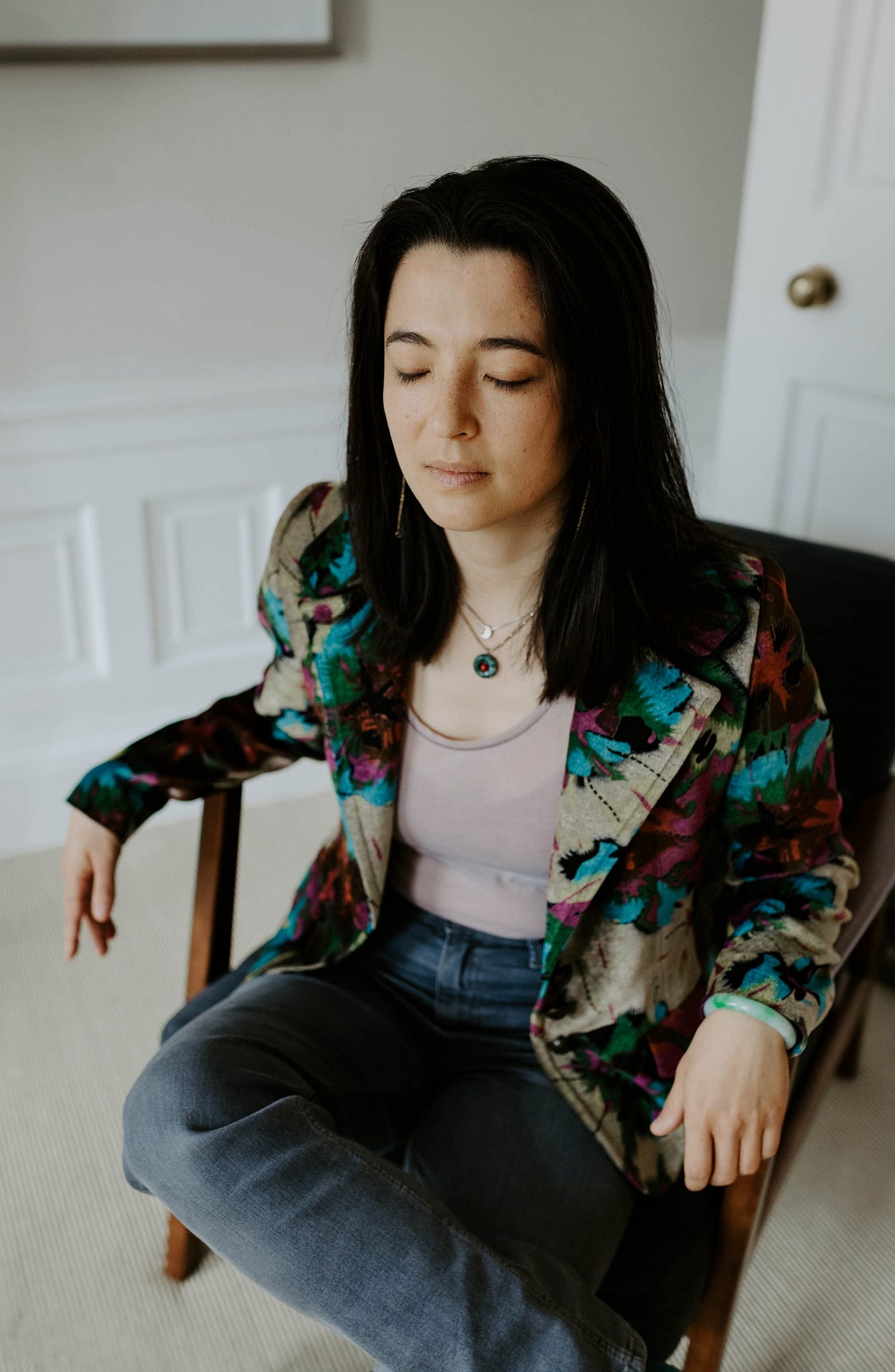Have you ever read The Subtle Knife?
It’s a book by Philip Pullman — the second part of a trilogy, His Dark Materials, which follows a girl called Lyra and her quest across different worlds. In the second book, she meets a boy called Will, who discovers he has the ability to use an incredibly powerful tool called Æsahættr — the 'subtle knife' of the book’s title.
The tip of its blade is so fine (so subtle, in fact) it can cut the tiniest of particles — and into other dimensions.
The thing is, in order to use it properly, Will needs to be in a state of relaxed concentration. He needs to be 'one with the knife.'
He can’t force it. He can’t impose his will on it. But he can 'move into it.' (This is not the language used in the book btw! This is my particular interpretation.)
What I love is that he can’t directly cut at air and create a hole or portal into another world. He almost has to go at it 'sideways.' (Again, not the language used in the book!)
It reminds me of those 'Magic Eye' stereograms that were popular when I was at school. Those images that look like a jumbled, fuzzed up pattern; until you view them with a more relaxed focus (I always thought of it as looking 'through the image,' and then slowly bringing my vision back to the centre) …to reveal the shape that is hidden within.
I think of this when I think of coaching — and how very often, going 'direct' at a problem doesn’t really work.
It’s like trying to cut through the air with the subtle knife.
Let’s say I don’t want to do something — in fact, let’s use an example from real life: where I agreed with someone (someone I specifically hired to help me with my marketing) that I would create some resources as a way to encourage people onto my newsletter.
I haven’t done it. I’ve had at least a month to do it, and I’m still not doing it.
An 'obvious' conclusion here would be: I’m lazy. I’m not trying hard enough. I haven’t prioritised it. Also, maybe it’s not clear what I need to create, and so I don’t know where to start.
An obvious way to tackle the problem would be to block out some time in my calendar and figure out a plan and create something.
Yet I still haven’t done it. Even though I blocked out time. Even though I could definitely do something if I forced myself to.
I’d hate it though. And that’s the interesting question-invitation.
What’s happening here?
After reflection, I realised that having recently taken on a few more clients, and feeling quite scattered, I didn’t want to take on more clients. I didn’t want to 'grow my audience.'
I should point out that my thinking isn’t entirely logical. You can definitely grow your audience without taking on more clients!
But the point is, my thinking wasn’t logical; and so a logical solution was never going to 'fix' it.
Instead, I quite understandably was having a response to an increased workload, and thinking “I don’t want to feel overwhelmed!”
That meant 'no extra work.' And definitely nothing that could potentially bring me more clients.
I’ve since started to feel differently. As of writing this, I still haven’t made any resources, but I can feel the aversion to engaging with people altogether is softening, and I’m more open to having conversations and exploring ideas.
None of this insight would have come if I’d just kept trying to tackle the problem head on.
To be sure, I needed to block the time in my calendar and NOT do the work — to see I was avoiding doing the work in the first place.
But once I saw I was having an aversion to something underlying, it was most helpful for me to approach the problem 'sideways.' From a different perspective. With a relaxed focus.
In reality, this was me going for a walk, sitting on a bench, and letting the question of 'Why aren’t I doing this?' mull over in my mind. I didn’t focus on it directly, I just let the idea of the thing float about.
This is actually a particular type of focus: mind-wandering1. And it’s incredibly important for creativity and making connections you wouldn’t necessarily make in the first instance. It’s the type of attention that’s associated with going for walks, being in the shower, daydreaming, etc.
It’s also the type of attention I like to bring to the coaching space. It’s obviously not exactly like daydreaming; it’s more structured than that. But it’s a blend of that 'sideways,' or softer-focus thinking (as opposed to the spotlighted thinking we often use with problems), guided by the questions you want to explore.
It’s that sort of playful, curious focus that allows us to touch other worlds, unlock the reasons as to why we aren’t doing something, or reveal the shapes that are hiding within the puzzle.
What do you think? Does this idea make sense for you?
What ways do you like to find your own 'relaxed focus'? Have you tried asking yourself 'direct questions' in a 'sideways manner,' if that makes sense?
Lots of people love journaling for this — it gives them a way to connect with something that’s deeper than their critical thinking faculties; which is where all sorts of insights come from. But personally, I love going for a walk and moving at the pace my body wants to, as I digest and 'turn over' the questions.
And of course, being with someone you trust, who can ask questions and help you find those answers for yourself can be invaluable too ;)
Much love :)
Kathryn
📎 kathrynho.com / how to work together / email / instagram
I recently came across this concept in Johann Hari’s book, Stolen Focus: Why You Can't Pay Attention— and How to Think Deeply Again. He’s obviously not the first person to write or think about this subject, but I would highly recommend it as a read. Also, you can check out the audio interviews he did as part of the research for his book on the Stolen Focus book’s website, here.




